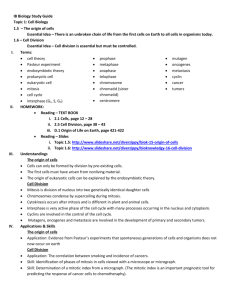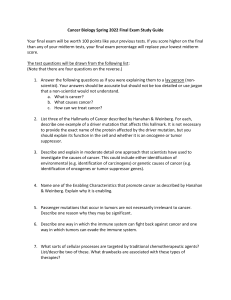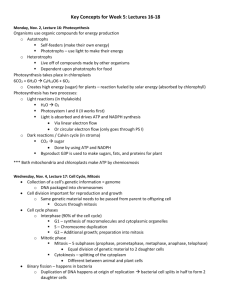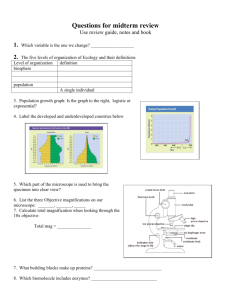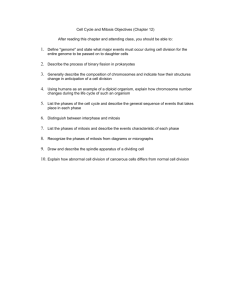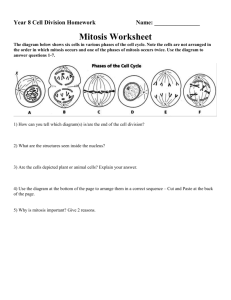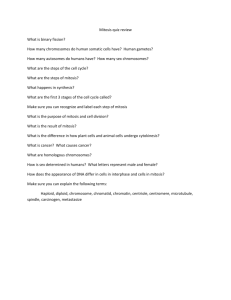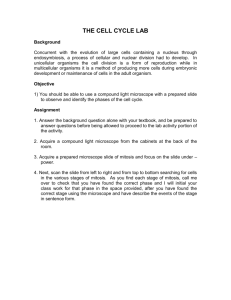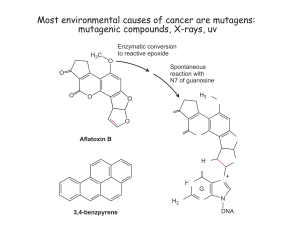Sylvia S
advertisement
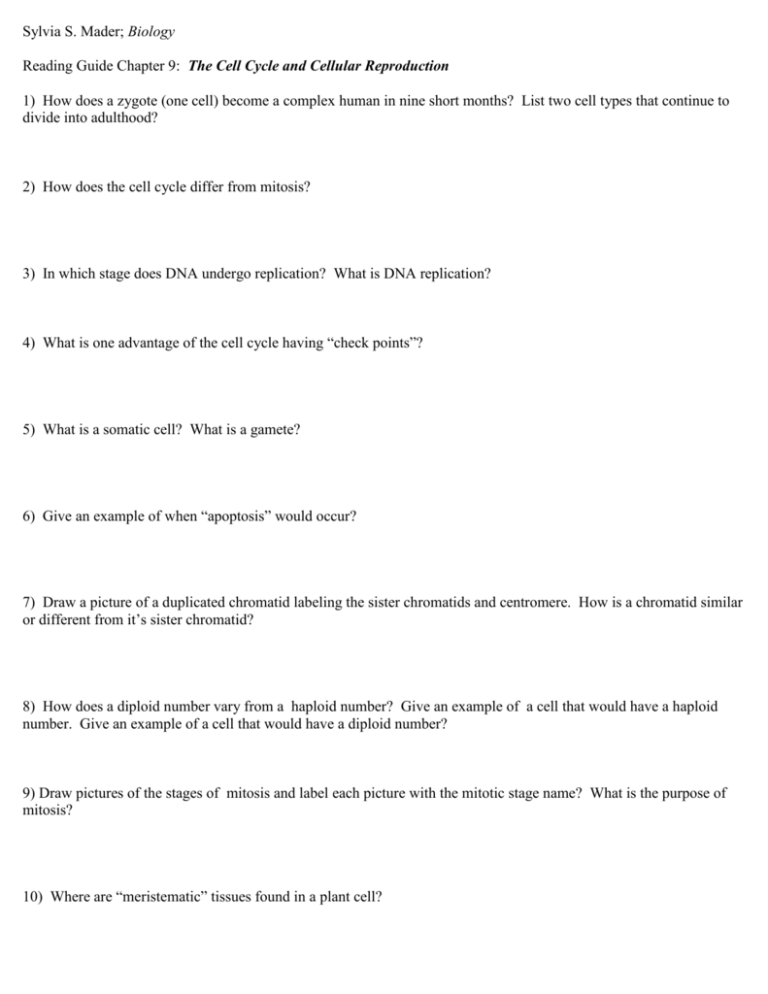
Sylvia S. Mader; Biology Reading Guide Chapter 9: The Cell Cycle and Cellular Reproduction 1) How does a zygote (one cell) become a complex human in nine short months? List two cell types that continue to divide into adulthood? 2) How does the cell cycle differ from mitosis? 3) In which stage does DNA undergo replication? What is DNA replication? 4) What is one advantage of the cell cycle having “check points”? 5) What is a somatic cell? What is a gamete? 6) Give an example of when “apoptosis” would occur? 7) Draw a picture of a duplicated chromatid labeling the sister chromatids and centromere. How is a chromatid similar or different from it’s sister chromatid? 8) How does a diploid number vary from a haploid number? Give an example of a cell that would have a haploid number. Give an example of a cell that would have a diploid number? 9) Draw pictures of the stages of mitosis and label each picture with the mitotic stage name? What is the purpose of mitosis? 10) Where are “meristematic” tissues found in a plant cell? 11) Draw a picture of a plant cell undergoing cytokinesis labeling the following: cell plate, new plasma membrane, new cell wall material. 12) List AND EXPLAIN three characteristics of cancer cells. What are four behaviors that increase the chances of acquiring cancer. 13) Define the following terms: malignancy, metastasis, tumor and benign. Include all of the terms in ONE complete and coherent three sentence paragraph describing a fictitious person named Matilda who recently learned that she has cancer. 14) How do mutations in tumor suppressor genes lead to cancer formation? How do mutations in proto-oncogenes lead to cancer formation? 15. Give one example of a tumor suppressor gene. Use this term in a sentence. 16. What is binary fission? What domain and/or kingdom does this term relate to? 17. What is the function of cell division in fungi, plants and animals? How does this differ from the function of cell division in prokaryotes and protists?

